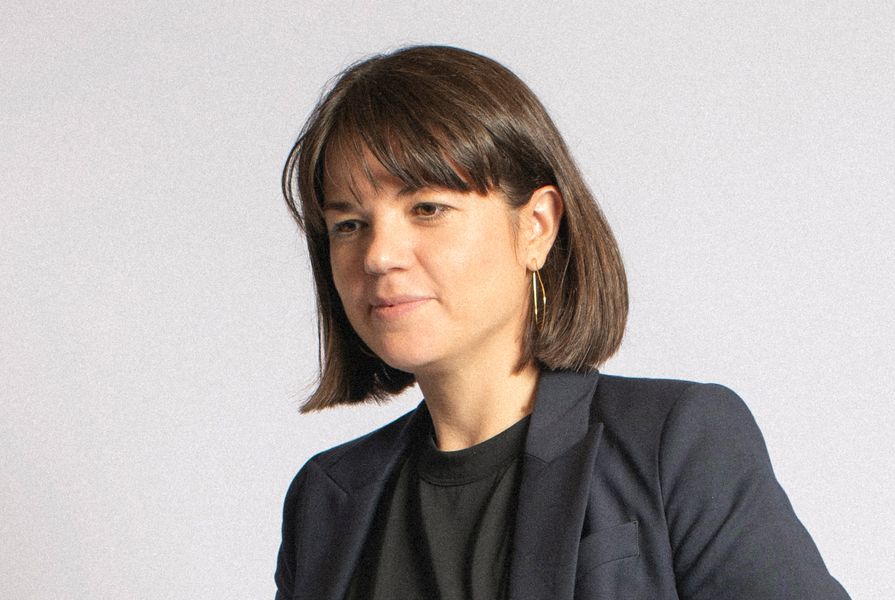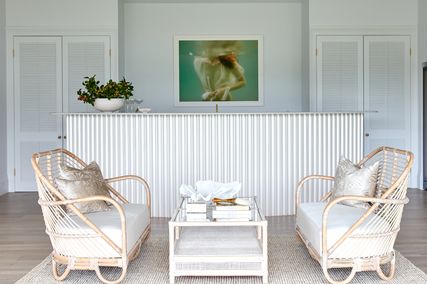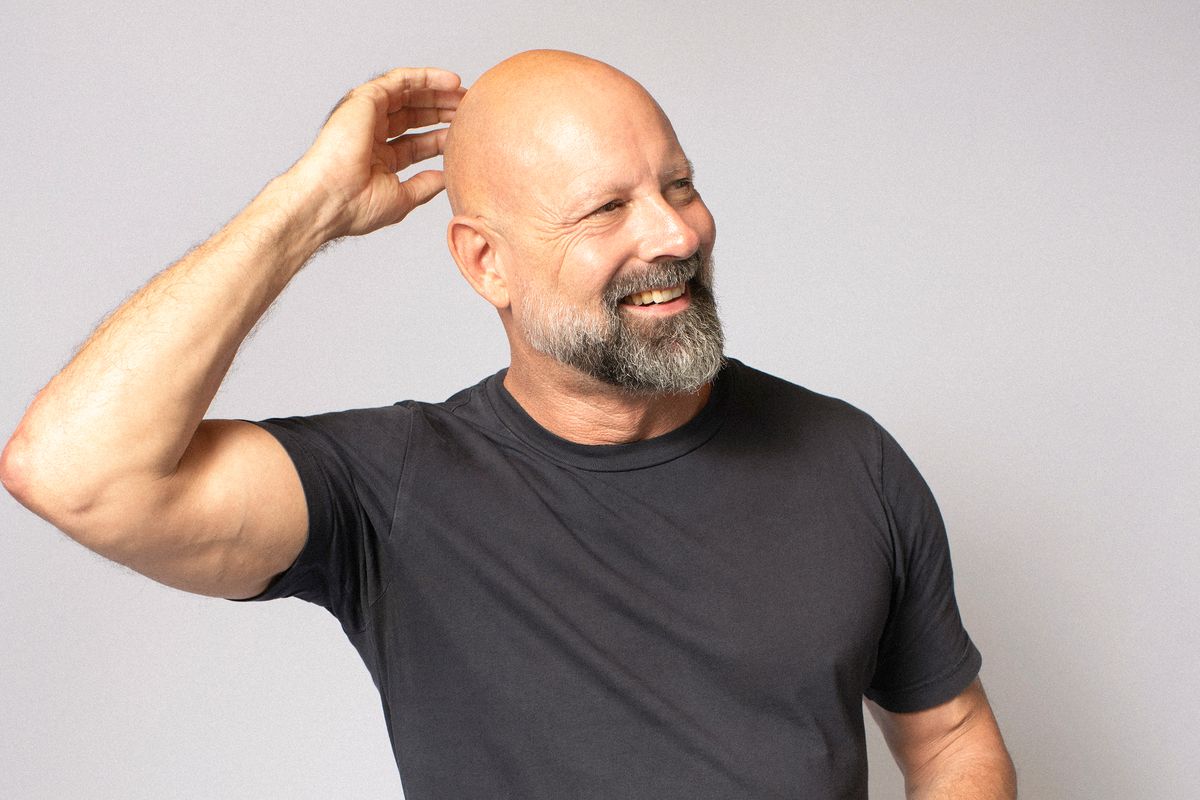Tiffany Liew: Could you describe your current roles at BVN and how long you have been working there?
Ali Bounds: We have multifaceted roles. As co-studio principals, Bill and I jointly lead many projects, often collaborating with other principals. Additionally, we support the studio director, overseeing HR, project resourcing, recruitment and studio management. I’ve now been at BVN for 12 years, with two years out in the middle (working in London).
Bill Dowzer: I’ve been here for 27 years, 22 years as a principal. Like Ali, I think it’s important to lead projects and mentor others in a way that creates a culture of sharing. One of the defining parts of BVN is that all the principals are equal owners, which creates a culture of respect for each other.
AB: I became a principal in 2019, and from that moment, I had the same vote as the rest of the principals. It is quite an unusual structure compared with most other practices.
BD: When I became a principal, the equal model of ownership was already in place. I became equal shareholder to Lawrence Nield, James Grose and the other principals at the time. The culture has evolved through the process of giving younger people leadership opportunities in a supportive and collegiate environment.
TL: Is diversity in leadership something that your mentors encouraged you to pay forward?
A principal at BVN, Bill Dowzer has worked across various sectors, cities and countries. His passion is empowering communities to be involved in the design process.
Image: supplied
BD: Definitely. I have had great mentors in Lawrence Nield and James Grose, as well as Rosemary Kirkby, an amazing client who taught me a lot. Our current co-CEOs, Ninotschka Titchkosky and Neil Logan, embody our approach to diversity in leadership.
TL: Ali, how did BVN equip you to step in as a principal?
AB: I was interviewed by Bill and came here after university. I wanted to join BVN for the community, culture and projects.
I had strong mentors at the time who were principals. Bill got me in the door, but I was offered opportunities for more client-side roles through people like Julian Ashton and James Grose, who advocated for me to work on quite complex projects.
After that, I went to London for two years. James stayed in contact with me while I was away and, when I came back, I was in no doubt that I would return to BVN. I’d worked on overseas education projects and there was a realization that we had a bit of a gap here. Phillip Rossington steered me to build sector experience, which contributed to a unique skillset that might help the principal group.
BD: In listening to your story, [I realize that] what I got from James and Lawrence was exposure to clients early on. When I was a two- or three-year graduate, I was attending all project meetings with Lawrence. With James, there was always a sense of joy and fun working on design-driven project teams.
TL: With the encouragement to try something new, have you ever thought of building your own practice?
BD: Numerous times. The aspiration (from university) was that you would have your own practice. I’ve been very fortunate at BVN – I had five years in both Melbourne and New York, setting up studios, along with highly rewarding roles in the Sydney studio. The variety of roles, fascinating projects and opportunities to work with great people have been exciting. I continue to learn new things every day here – I haven’t needed to look elsewhere.
TL: BVN’s continued evolution has presented interesting opportunities in itself, so you haven’t felt compelled to start your own practice?
AB: I have many friends who have. My husband has a small architecture practice, but I have never really had the desire, since joining BVN. The community and support here enables us to take risks, and there is a certain energy about the place. There’s a lot that I didn’t know coming into this role, and it’s not all laid out for you.
BD: We are very fortunate to be able to work across so many sectors. We don’t really have a “house style” because there are so many different people leading projects. Rather, it’s a house mentality and an approach based on critical thinking. Lawrence used to say that “good design is good business.” I really do believe that the quality of our design and the way that we do things is what ensures the practice’s evolution.
TL: What qualities do you look for in future leaders and in succession planning?
BD: People can be skilled architects, but if they can’t get on with people and they can’t get their ideas across, it’s limiting. Everyone has different ways of learning and thinking, but it’s important to develop soft skills and empathy. You have to understand the way others think and what values are important to them.
AB: So much of the business is the people that make it up. Even though the projects are important, it’s equally important that people feel satisfied and keep growing. For a long time in your career, that’s not the major thing that you have to focus on. And then you get into the position that we’re in – half our day is spent listening to and supporting people through different complexities in life. That’s a part that we both find very rewarding.
We (the principals) are all different, with different skills. When you’re thinking about succession planning, you need to ensure that the group has a balance of all those skills. We’re always looking at that mix across the group and the practice.
TL: We’ve talked a lot about “how,” but not much about “why.” A group of 17 principals and 350-plus employees is sizeable. At a recent panel discussion, Davina Rooney [CEO, Green Building Council of Australia] mentioned that we are entering a “disorderly decade of practice,” with a climate crisis, a housing crisis and a cultural moment (the Voice Referendum). How do you go about identifying and aligning the core values that drive the future direction of the business?
BD: Well, we deliberately describe BVN as a “creative collective.” It’s a collective of different people working together creatively to solve big, meaty problems.
We are in a fortunate position where we can have influence, through leading and choosing project types that we want to pursue. We have a weekly business development meeting where new projects are put through a go/no-go process. A key question is around regenerative potential: Is this a project where we can make a difference? Is the client interested [in regeneration]? This helps us to collectively agree on what to proceed with.
AB: We don’t have one owner, but a custodianship. We have a “vision wheel” that aligns a lot of interests. These interests include innovative materials, minimizing waste, and robotics, but our vision is also about our brand, connections and relationships. Our vision wheel captures the things we care about. We can’t tackle them all at once, so, two years ago, we decided which ones to tap into first.
One of those was “Connecting with Country.” Kevin O’Brien [principal at BVN] took the lead on creating our “Designing with Country” framework. Another one was “Regen,” where our approach was to find international experts to come in to educate us about regeneration.
BD: We don’t have to know all the answers; we need to have that curiosity and the will to learn.
AB: We all need to keep learning. We need to re-tailor what the next focus areas are, to respond to the things that you’ve mentioned. As we start to look at different issues, we might highlight different parts. We have a number of “tenets” underpinning our work (including Designing with Country, Radical Adaptation and Towards Net Positive); they are a way to talk to some of those principles without having to try to describe everything at once.
TL: Do you think that large practices are better able to advocate for change beyond the architecture industry?
AB: I don’t know if they’re better able to. Some smaller practices have such clarity of what and who they are, and they might have charismatic individuals who can have a lot of influence. Sometimes, in a bigger group like BVN, there isn’t necessarily someone who’s the face. However, we can lead by setting a good example. For instance, one of the things that comes to mind is setting the right fees.
BD: Our practice has been built upon a series of collaborations. Lawrence collaborated with James Grose at Grose Bradley. Donovan Hill collaborated with Bligh Voller. The merger of different organizations to create something stronger has been an important part of our evolution. We have a really strong alumni. We have also had great people who have started small practices – like Matthew Woodward, Andrew Benn and Jon Jacka.
AB: Jon was one of my mentors when I first started here. Olivia Hyde was also a strong mentor as well.
BD: The influence of Abbie Galvin in the evolution of BVN was really important. Her government architect’s role is a natural progression in her ongoing influence and advocacy.
TL: It seems that BVN’s influence continues through the people who shaped and were shaped by the practice. Do you have any advice for businesses looking to evolve leadership from within?
BD: The first thing is to let go of having to control. Many business owners struggle with the idea of letting go. Building a legacy practice is not about ownership, but about stewardship. You do not have all the answers and the journey is far more exciting when you trust the people you are working with and are constantly learning.
AB: I think it’s important to seek out genuine relationships, where you can understand other people and learn from them to grow, with a supportive community around you. They could be clients, other professionals, or someone you can bounce ideas off or feel vulnerable with. We do a lot of formal and informal mentoring here and try to make ourselves approachable. People should feel that they can ask questions and ask for opportunities.
BD: We all have very different skills, but together they’re so broad. What we can do together is so much better than what we can do as individuals.
Addendum: Ali Bounds has since been elevated to co-CEO of BVN, effective from 1 April 2024.


















